By paqueklavier Montag, der 25. März 2019
Dear lovers of art and music,
On March 30, 2019, the vernissage of the artist duo “Antonio Máro” took place. To start off, there is always, as it is now tradition, a concert that was performed this time by the Aelius trio.
And this prelude was extremely well done, because the musicians really carried the audience away with their enthusiasm for music. Starting with the joyful and lively trio of Haydn, Jennifer Seubel (flute), Marco Sanna (piano) and Elio Herrera (cello) found a very nice classic introduction, which at the same time anticipated the idea of this concert: it should be fun and bring joy. The musicians understood how to do this very well, and they were very keen to act as a coherent whole. You never had the feeling that an instrument was in the foreground. Everything fit harmoniously together perfectly. Nonetheless, the pieces also demanded technical and musical qualities of each individual musician, as was repeatedly shown in some passages that the three confidently mastered. The trio of Beethoven also exuded a lively spirit, which was certainly due to the young age of the composer at that time. The piece was originally written for piano, flute and the bassoon instead of the cello. But the composition also allows the playing of a cello, since the pitch is about the same height with the bassoon. Listening to Beethoven always turns out to be particularly interesting, as he was a major actor of the high classic, who was a forerunner to the romantic as well. In this piece the particular the reference to the classic was well emphasized, so that many parallels and of course some differences in direct comparison with Haydn could be understood. However, the real highlight for many visitors was the “Four Seasons” of Piazzolla. If someone wasn’t awake already, then now was definitely the time! The rhythmic liveliness of this composer of the twentieth century, who had a great influence on the development of the South American tango, tempted almost everyone to join in as the trio played these wonderful pieces. A very nice performance!
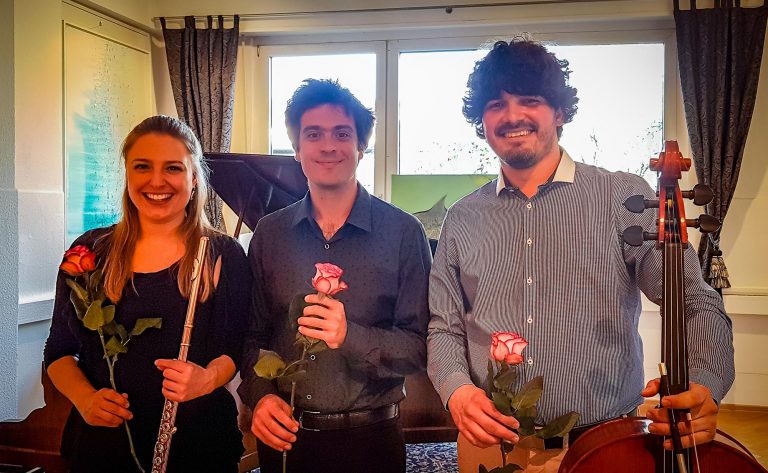
f. l. t. r.: Jennifer Seubel, Marco Sanna, Elio Herrera; Photo: Johannes Paqué

At 5 pm the actual opening of the exhibition took place. Unfortunately Apolo Ramirez couldn’t make it to the vernissage because of a disease, but his son had come, who is an equal part of the artist duo Antonio Máro. The introductory lecture was held by Johannes Paqué in dialogue with Rafael Ramirez. Johannes Paqué first spoke about the life of Apolo Ramirez, who was born in Peru in a small village. Early on, he developed a passion for art, especially through works by Willi Baumeister, Picasso, and also by German medieval artists such as Hans Holbein the Younger. But since art is something that often doesn’t pay well he studied medicine in addition to art. By doing so, he finally found himself in Germany, where he met his future wife, with whom he raised four children. Even while working as a practicing physician, Apolo Ramirez continued to paint. He also became a master student of Willi Baumeister and both combined a deep friendship during Baumeister’s lifetime. If you ask him what it is that he still has retained from Baumeister, then he always gives the answer that it is precisely the small color accents within a picture that affect it’s entire character. And if you look at the pictures (s.b.), then this is often the case. If one looks at the flute player (see picture at the bottom), for example, the inconspicuous red color accent makes a great deal in the momentum of the picture. All in all, it is always the colors that are in the foreground for both artists. The art of Antonio Máro stands for itself. It is not representative, not spiritualized and intellectually exaggerated. Rafael Ramirez understood that very early on. Already at the age of 12, he worked in the studio together with his father and since then he has played a significant role in the works of Antonio Máro. Both artists pursue very different artistic approaches: For Apolo Ramirez, the experiment is in the foreground, while Rafael Ramirez pursues a very well thought-out and conceptualized strategy in painting. The collaboration describe both artists as jazz, with different temperaments meeting and complementing each other to create an inimitable work of art that unifies the qualities of both artists in equal measure.
More about the art of Antonio Máro and the paintings can be found in the catalog, which was printed especially for this exhibition. It also contains an original signature of the artists and was produced in a small edition of 50 pieces. The catalog can be purchased for 15, – €.
The exhibition can be visited until 18 May 2019, by prior arrangement also outside the regular opening hours (Saturdays 14-18 clock).

f. l. t. r.: Rafael Ramirez Máro, Gabriele Paqué, Johannes Paqué; Photo: Jonas Kahn
Concert review
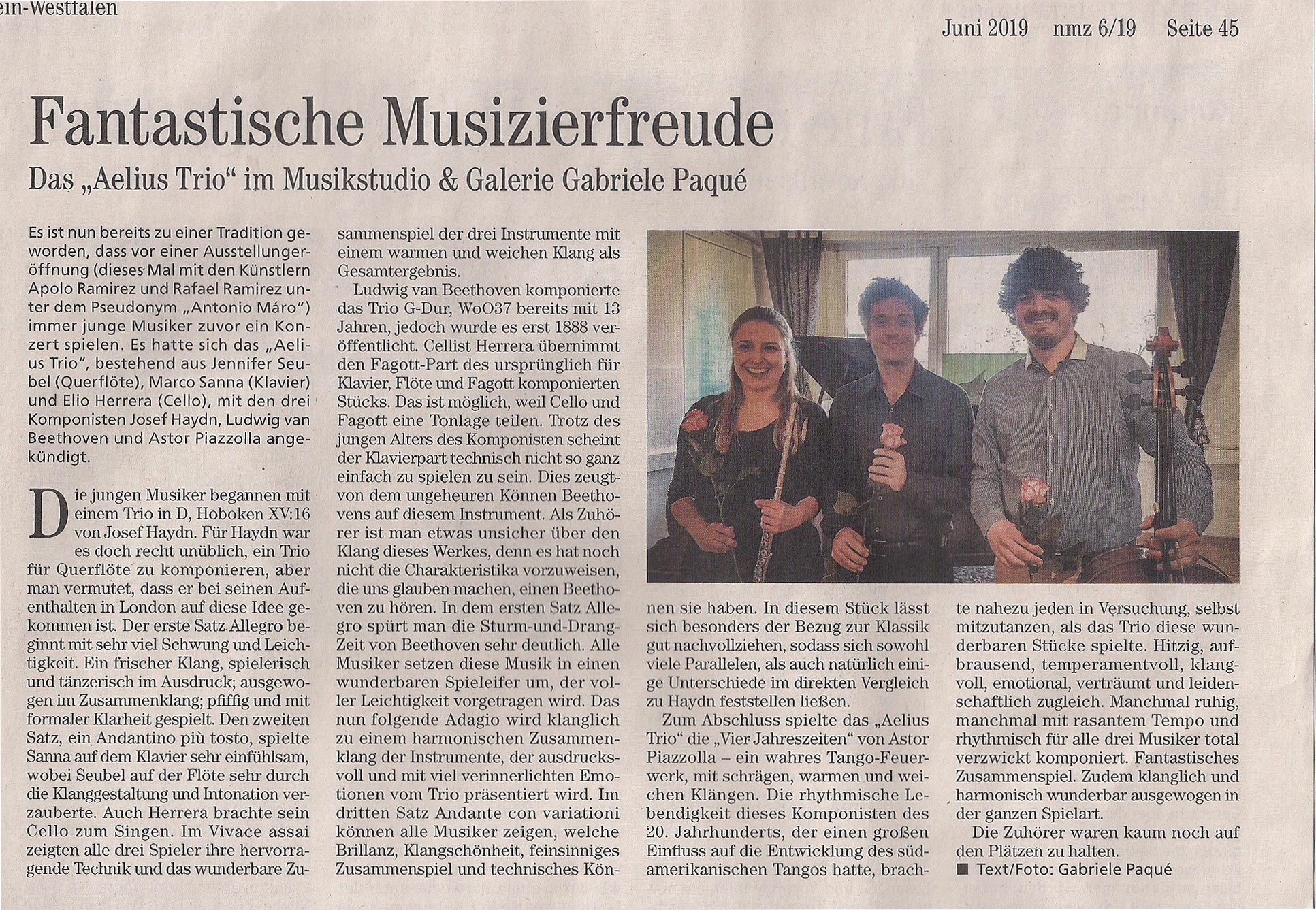
Video about the exhibition opening (in German)
Dear art and music lovers,
The two artists Antonio Máro and Rafael Ramirez Máro, father and son, are already long-time companions of our gallery and it is always a pleasure to welcome them in our venue!
Born in Peru painter Antonio Máro (born Apolo Ramírez Zapata) had been inclined to art ever since he was a child, but the family did not like the fact that his son was engaged in such a non-lucrative undertaking, so he initially painted anonymously. Ultimately, he studied medicine in Germany and worked for many years in this profession. However, he never stopped being an artist due to the encouraging words of his companions, and so he became a student of Willi Baumeister. Meanwhile, Antonio Máro had already made a reputation as an artist, so that he was ultimately no longer forced to continue working as a physician. Since 1972 he also works very closely with his son Rafael and both developed the Máro style, which is unmistakable in all their works. Their style is also influenced by the pre-Columbian art and culture of the indigenous people of Peru.
Rafael Ramirez Máro has also become famous as an artist under his own name, and his oeuvre, based on classical painters such as Leonardo Da Vinci and Goya, includes classical portraiture and the depiction of individuals as an expression of their time.
In 2018, Antonio Máro, who is artistically still very active, was 90 years old and so father and son decided to celebrate this birthday with an exhibition series for the whole 91st year! Both artists continue to develop the Máro style, and works by Máro in various creative periods will be on display.
The musical prelude to this exhibition opening is provided by the Aelius Trio, consisting of Jennifer Seubel (flute), Elio Herrera (cello) and Marco Sanna (piano). They play pieces by Joseph Haydn, Heitor Villa-Lobos, Louise Farrenc and Astor Piazzolla.
Three young, enthusiastic and exceptionally committed musicians from the Cologne University of Music founded the “Aelius Trio” in 2018. Jennifer Seubel, flute, Elio Herrera, cello, and Marco Sanna, piano, share a great passion for chamber music.
This relatively unusual ensemble has set itself the goal of exploring and interpreting known and unknown works. Well-known classical trios combine in their concert programs works by Haydn, Mozart and Beethoven and interesting, lesser-known works by composers (Louise Farrenc) or by forgotten composers (such as Ferdinand Ries).
The eclecticism of the “Aelius Trio” shows itself when the three musicians also perform works of “New Music”, as well as Crossover / Jazz or the Tango world with, for example, the whole cycle of the seasons by Astor Piazzolla.Aelius Trio
Saturday, March 30 2019
Musikstudio & Galerie: Gabriele Paqué
Blücherstraße 14
53115 Bonn
Gallery open from 3 pm
The artists are present
3:30 pm: classical concert
with the Aelius Trio. Admission free – donation requested!
Further information about the concert can be found below.
Introductory speech by Johannes Paqué
at 5 pm
Afterwards tour with the artists through the exhibition
Works of the exhibition
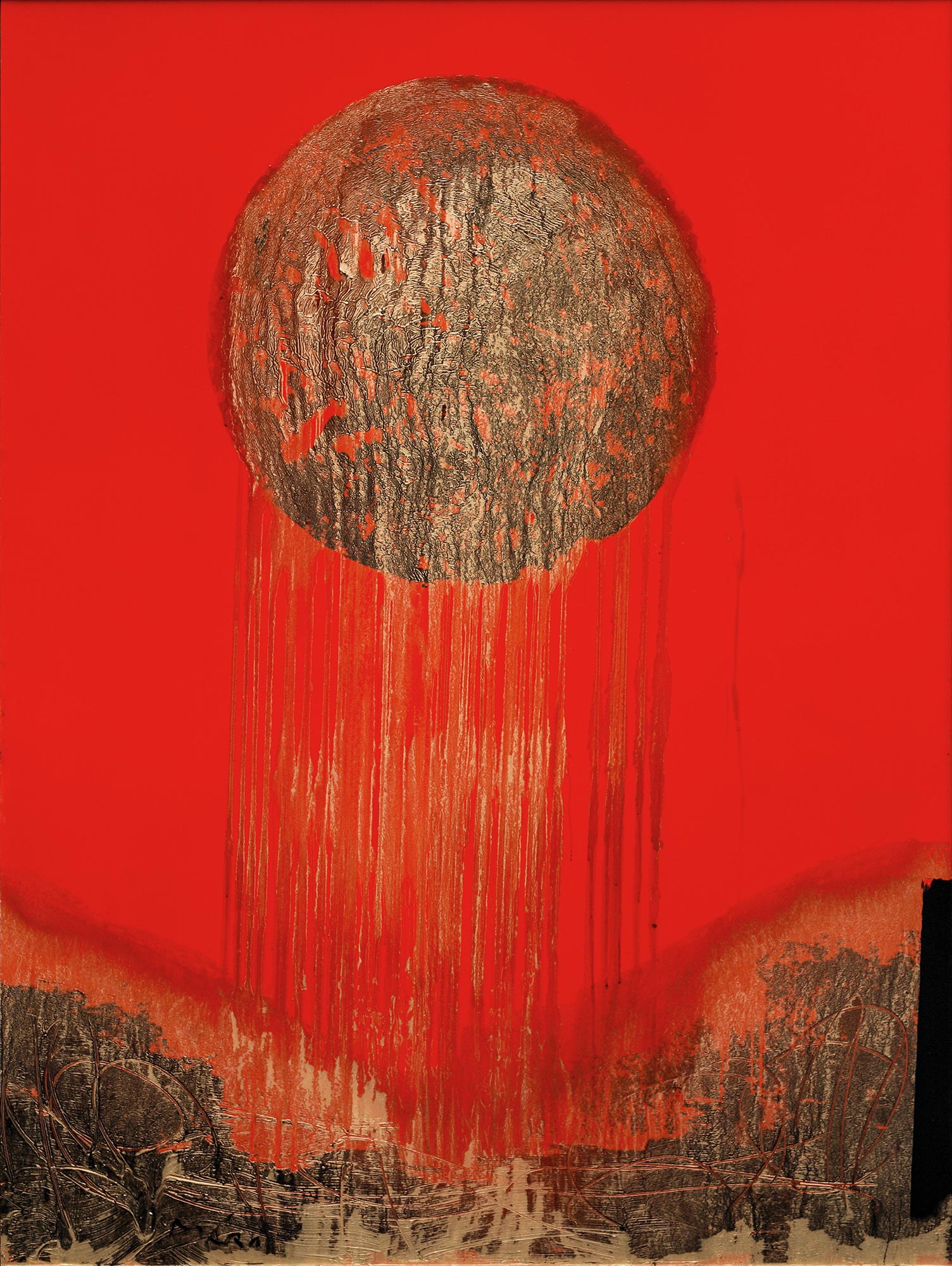
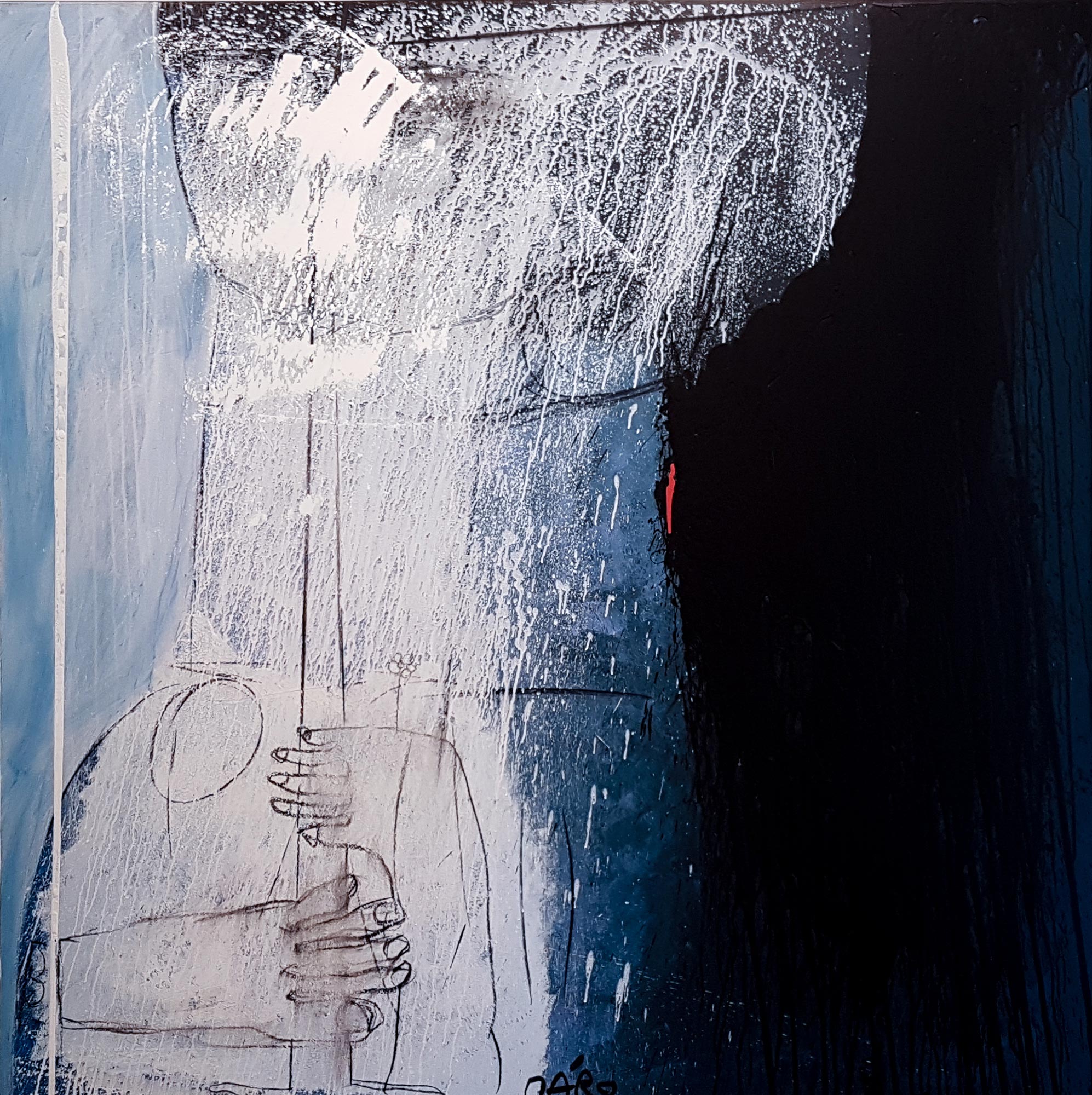
Program:
Joseph Haydn (1732-1809)
Trio in D, Hoboken XV:16
– Allegro
– Andantino più tosto Allegretto
– Vivace assai
Ludwig van Beethoven (1770 – 1827)
Trio G-Dur, WoO 37
– Allegro
– Adagio
– Thema andante con variazioni
Astor Piazzolla (1921-1992)
Las Estaciones Portenas (Die vier Jahreszeiten) für Ensemble
– Spring
– Summer
– Autumn
– Winter
The admission is free!
A donation for the musicians will be requested.
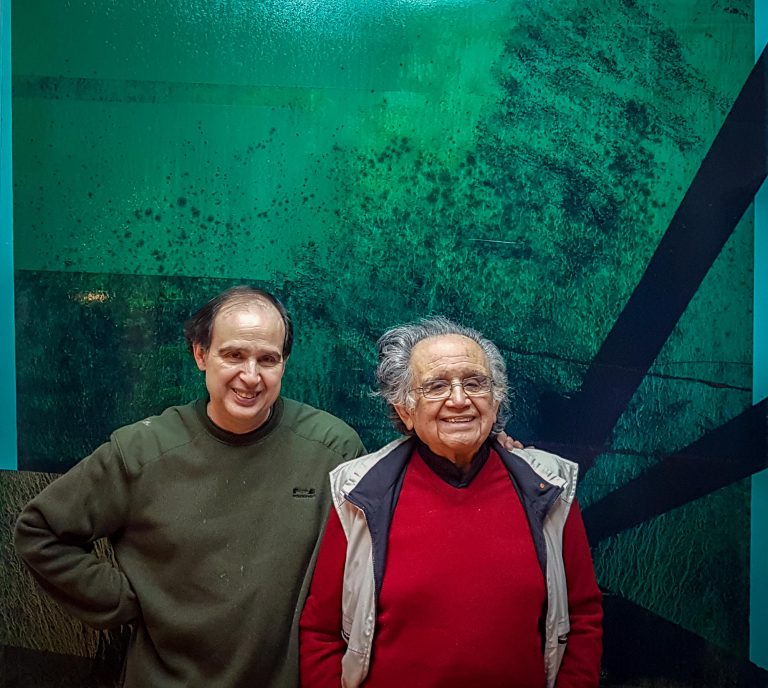
Photo: Johannes Paqué
Antonio Máro
As Antonio Máro both artists create mostly abstract paintings, which in their meditative mood take up the art of the indigenous population of Peru, of which both artists are descendants..
Apolo Ramírez
Apolo Ramírez Zapata, born 1928 in Catacaos (Piura), is a Peruvian artist. Apolo began to paint as a child. His first teacher was the Belgian Ricardo Grau, who was then the director of the Art Academy of Lima. As a medical student he came to Germany, where he studied under Willi Baumeister. Since 1972 Antonio Máro has been working under this pseudonym together with his son Rafael Ramírez under which they both develop the Máro-style.
The spiritual roots of Máro’s work lie in the pre-Columbian art and culture of his native Peru. Both artists live and work today in Hauset, Belgium.
Rafael Ramírez Máro
Rafael Ramírez is not only biographically a citizen of the world, who has found a home in different countries, he is above all a citizen in the artistic field. He alternates virtuously between the different epochs of art history. In his work he brings to life Rembrandt just as much as Tintoretto, Goya or Leonardo da Vinci. To him there is no contradiction between temporal proximity and a centuries-long distance. He is concerned with the artistic expressions of feelings, thoughts or visions, which come in different historical guises, but always pointed to the same temporal origin.
The epochal references that are comprehensible to the viewer of Ramírez’s works are mirrored by the possibilities and viewing habits of our time. The art of the 20th century has a fragmentary character and no longer has the closed horizon like the works of bygone eras. It is possible to juxtapose different epochs with their expressive possibilities and to synthesize them with the means of modernity such as “Infinito” and “Assemblage”. The focus is on the feeling that artistic works trigger on the viewer.
Ramírez’s paintings thrive on deep feelings and their artistic representation. In his works astonishment reveals the boundless possibilities of art to transcend times and spaces and to penetrate into depths that are hidden from the superficial view. The emotion of the suggestive power of colour and form is communicated to the viewer. It is about the possibility of feeling for oneself, of absorbing feelings over spaces and times. The painter draws his attention to the detail, to inconspicuous gestures that are expressed in a drama as well as in a musical composition or in the dance step of a flamenco dancer, whom the artist captures with a connoisseur’s eye. He stages key scenes that seem to reveal the meaning of existence.
Ramírez focuses on such scenes and creates new approaches to reality through their artistic presentation. He is concerned with both the individual and the spirit of its epoch. Both are closely related in his thinking about mankind. Mankind is not isolated, not an island in its time. According to this idea, the figure never stands alone in his paintings. Rather, it is the symbolic expression of its time.
Just as color, line, space and emptiness in the compositions are in a kind of dynamic interrelation, so does the human being, the center of Rafael Ramírez’s artistic oeuvre, in an epochal context. His paintings are a kind of stage on which the drama of life develops. Historical material captivates him, but nevertheless: Although the artist often expresses such themes in his pictures as scenes from the Spanish Civil War (1936-39) or the crimes of the National Socialists against the Jewish population, he does not see himself as history painter. The different figurative forms are for him ways that lead to a different goal than to a theatrical presentation. He is concerned about the dismay. For Rafael Ramírez, images are not images in the mimetic sense. Rather, he sees his painting in the tradition of the magically spiritual panel painting that reaches deep layers of the subconscious.
Aelius Trio

Jennifer Seubel first studied at the Staatliche Hochschule für Musik Trossingen under Prof. Arife Gülsen Tatu, where in July 2009 she passed her final exam in the degree program “Graduate music teacher” with the grade “very good”. She continued her artistic education with Prof. Robert Winn at the University of Music and Dance in Cologne (HfMT) and completed her studies of artistic instrumental education in July 2010 with honors. From October 2010 to April 2014 she studied there in the master’s program, which she finished with an excellent degree and the title “Master of Music”.
She gained further musical knowledge by participating in masterclasses with Prof. Eckard Haupt, Prof. Andrea Lieberknecht, Michael Cox, Robert Aikten, Gitte Marcusson, Thaddeus Watson and Prof. Eyal Ein-Habar. At an early age she began with orchestral work. Already at the age of ten, she gave her solo concert debut with the Kreisjugendorchester Südliche Weinstraße. From 2000-2006 she was a flutist in the Landessymphonieorchester Rheinland-Pfalz, with which she undertook concert tours to California, China, the Czech Republic and Poland. She gained further orchestral experience at the “German-Scandinavian Youth Philharmonic”, the “Russian Chamber Philharmonic Orchestra of St. Petersburg”, the “Kammerphilharmonie Europa”, the “Junge Kölner Philharmonie” and at the “International Young Orchestra Academy” at the “Festival of Young Artists Bayreuth”. Since 2010 she regularly plays in projects of the “Neue Philharmonie Westfalen” in Recklinghausen and Gelsenkirchen and at the “Philharmonie Südwestfalen”. She has also been invited to the “Frankfurt Opera and Museum Orchestra”, the “Dortmund Philharmonic” and the “Stuttgarter Kammerorchester” ever since and has already performed with soloists such as Daniel Hope and Paul Meyer and in halls such as the Berlin Philharmonic, Palau de la Musica Barcelona and the Wiener Musikverein. Even as a soloist, Jennifer Seubel has already excelled several times together with the “Oberbergische Symphonie-Orchester” as well as with the “Collegium Musicum” in Lviv, Ukraine.
Her prizes and awards include several awards at national and federal level at the music competition “Jugend musiziert”, the 2nd prize at the Pfälzer Hausmusiktage, 2002, the 1st Soloist Prize and Special Prize for Contemporary Music at the International Music Competition “Città di Barletta” in Italy , 2006, the “Iris-Marquardt-Förderpreis” of the Trossingen University of Applied Sciences in the category Chamber Music, 2007, the 1st prize in the “Euroasia Music Festival”, 2009, the 2nd prize. at the “National Fluitconcours Ittervoort” in The Netherlands, 2011 and the 2nd Prize at the “Alexander & Buono International Flute Competition”, New York, 2011. In 2002, Jennifer Seubel received a scholarship to attend the workshop of “Blue Lake Fine Arts Camp “in Michigan, United States. Since 2003 she is a scholarship holder of the “Paul and Yvonne Gillet Foundation” for young musicians.
In April 2010 she was admitted to the foundation “Yehudi Menuhin LiveMusicNow Köln e.V.” and from 2012-2014 she was one of the scholars of the “Werner Richard – Dr. Carl Dörken Foundation “. Since October 2012 she is a lecturer at the University of Music and Dance Cologne and is invited as a jury member to audition the Cusanuswerk and the Lions Music Prize. Since October 2018 she also works as a flute lecturer at the University of Koblenz. She regularly gives chamber music concerts in different ensembles. Be it with the flute duo “Noble”, together with Sally Beck, with whom she published an arrangement of the “Carnival of the Animals” in the Bärenreiter publishing house in early 2018, or with Ivan Petricevic, guitar, in the “Duo Ventone”. In addition, she performs in the “Aelius Trio” together with Elio Herrera, cello, and Marco Sanna, piano, is involved in projects of the “Opernwerkstatt Köln” and also flutist in the collective 3:6 Cologne, the ensemble for New Music, by the Kunststiftung NRW, the German Music Council and the Musikfonds.
Elio Herrera was born in San Carlos-Cojedes, Venezuela. Under the supervision of the world-renowned music project “El Sistema” he received his first cello lessons at the age of ten.
As a 16-year old he already played together with the Venezuelan Teresa Carreño Youth Symphony Orchestra, led by Claudio Abbado, Sir Simon Rattle, Gustavo Dudamel, Eduardo Marturet, Sung Kwak, Frühbeck de Burgos, Maria Guinand, Placido Domingo, Christian Vasquez, Rebecca Miller, Eugene Kohn and Nikolaj Znaider and Robert H. P. Platz.
In the same year he began studying at the University of Arts in Caracas with William Molina and Marek Gazjler, which he completed in 2013 with the Bachelor of Music. Since 2016, Herrera has been studying violoncello in the master’s degree at the University of Music and Dance Cologne in the class of Nadège Rochat and Prof. Maria Kliegel. In addition to numerous projects at the university, he attended in 2018, among others, the Academy of Performing Arts and Music in Montepulciano under the supervision of Prof. Dr. med. Florence Millet and Prof. Johannes Schöllhorn. Since February 2018 he is a member of the “Aelius Trio” for chamber music. He also gave guest performances at the Cologne Opera House in the same year with the support project “Gargonza Arts” for New Arts.
His passion for music has already taken him to other international stages of renowned concert halls, including the Berlin Philharmonic, the Vienna Concert Hall, the Amsterdam Concertgebouw, the Madrid Auditorio Nacional de Música, the Toulouse Halle aux Grains, the Theater am Kirchplatz in Lichtenstein, the Stavanger Concert Hall in Norway, the Concert Hall in Stockholm, the Munich Gasteig, the Lisboa Grande Auditório, the Royal Festival Hall, the Istanbul Zorlu Center Performing Arts, the Festspielhaus Salzburg and the Teatro Alla Scala Milano.
“For me as a musician, it’s not just playing the cello alone that gives me fulfillment. Much more it is the exchange between people and cultures, to be able to experiment with music and develop new concepts. “
Marco Sanna, born 1989 in Cagliari (Italy), received his first piano lessons at the age of 5. He received a scholarship to study for a year at the renowned “Ecole Normale de Musique Alfred Cortot” in Paris with Professor Patrick Zygmanowski. He began his studies with Prof. Fabio Bidini in 2010 at the Hanns Eisler School of Music in Berlin and continued at the HfMT in Cologne, where he completed his master’s degree in March 2018. From October 2018 he will start his chamber music master studies at the Frankfurt University and his pedagogical Bachelor at the HfMT Cologne.
He has completed numerous master classes with professors such as Fabio Bidini, Jacques Rouvier, Aquile’s Delle Vigne, Benedetto Lupo, Menahem Pressler, Pinchas Zukerman, Gabor Takacs-Nagy and Andras Schiff. From the masterclass with the pianist Andras Schiff the radio station “Deutschlandfunk” reported with great enthusiasm and much praise for the skills of Marco Sannas, who found particularly much recognition here.
Marco Sanna is a multiple award winner of national and international competitions. As a soloist and chamber music pianist, he has already been invited to festivals such as the “Rome International Piano Festival” or “Verbier Festival”, and has performed several times in important concert halls (Berliner Philharmonie and Kammermusiksaal, Konzerthaus Berlin, Audimax Bochum, etc.). In May 2014 Marco Sanna published a joint work with double bassist Orazio Ferrari. The result was a CD for the Italian music label “Velut Luna”. The special feature of this musical collaboration is that this is the world’s first recording of Chopin’s Cello Sonata and Schumann’s Adagio e Allegro on the double bass. The CD got very positive reviews from international magazines like “The Strad” and “Gramophone”. A second CD with music by Rachmaninov is scheduled for 2018.
Marco Sanna regularly performs chamber music evenings with members of the Berlin Philharmonic and Karajan Academy Berlin, with cellist Anne Yumino Weber (principal cellist at the Frankfurt Opera, solo cellist with DRP Saarbrücken) and clarinetist Andy Miles (solo clarinettist with WDR Cologne).
From July to November 2017, Marco, together with the Berlin “Furiant Quartet”, undertook a concert tour in Europe and America sponsored by the “Lincoln Center New York”, with a total of 290 concerts.
I am looking forward to your visit!
sincerely
Gabriele Paqué
Note on parking!
Parking spots in Bonn-Poppelsdorf, about a 10 minutes walk from the Blücherstraße!
The next concert takes place on April 6 2019 at 5 pm.
Sheila Arnold (Klavier) and Guido Schiefen (Cello) play works by J. Brahms
Current exhibition by Antonio Máro
The gallery is open on saturdays between 14 and 18 pm.
After telephonic agreement the gallery can also be visited at other times.
Blücherstr. 14, 53115 Bonn
Phone: 0228-41076755


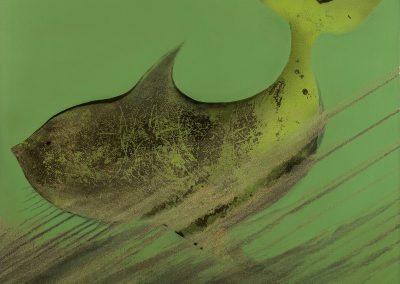



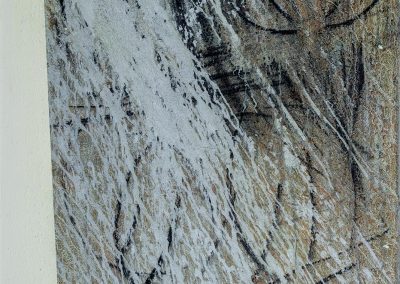
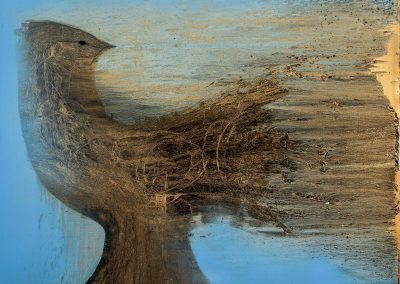
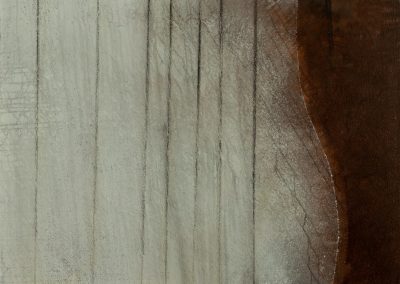
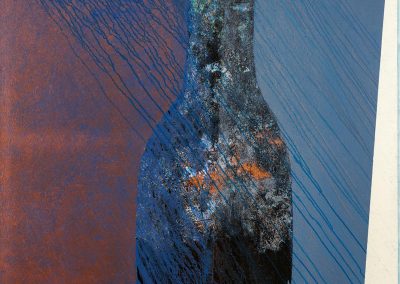
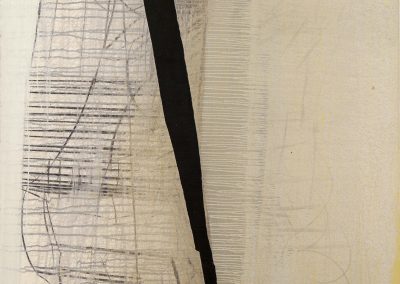
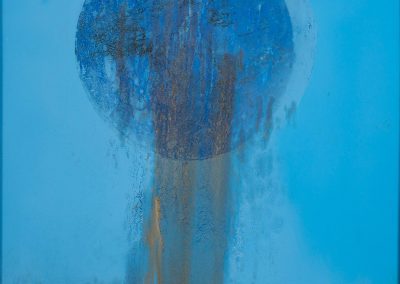
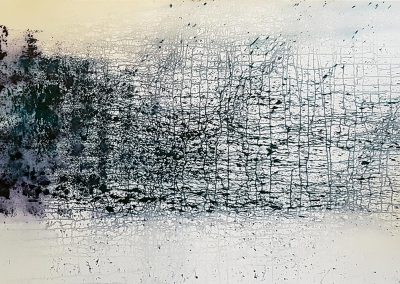
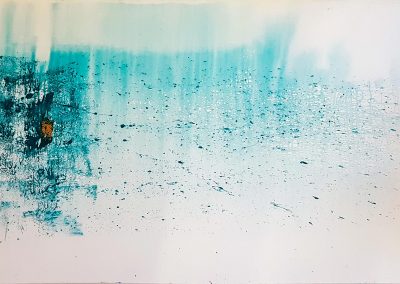
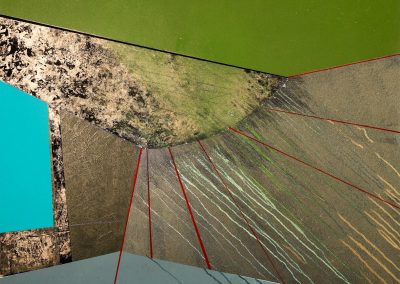

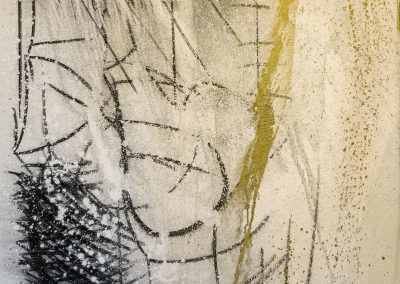
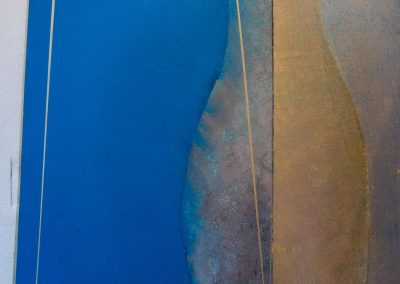
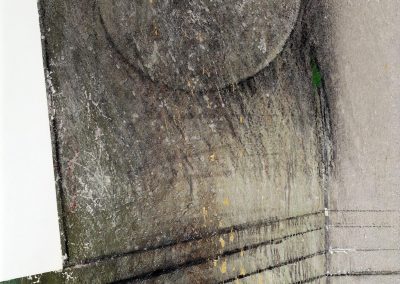
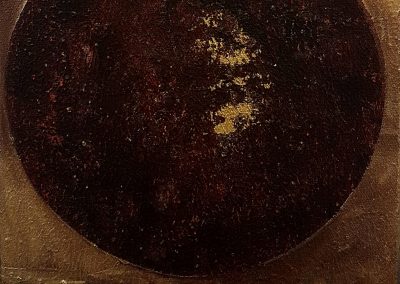
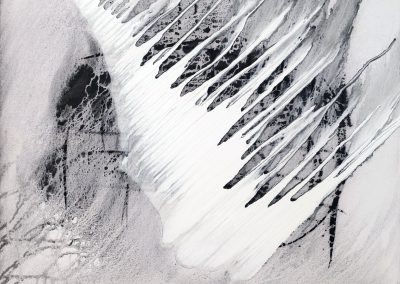

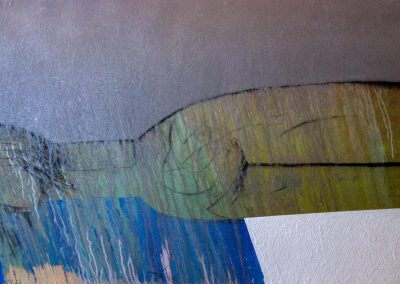
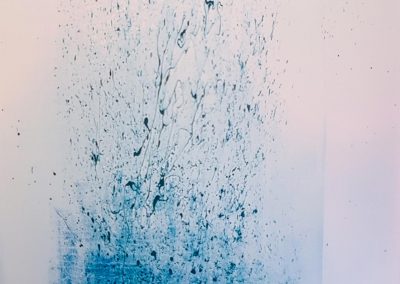
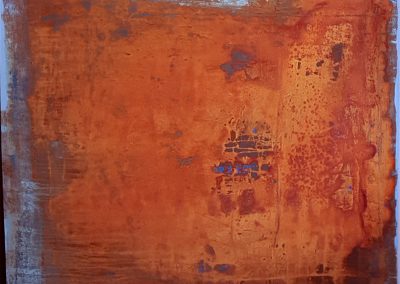
Recent Comments